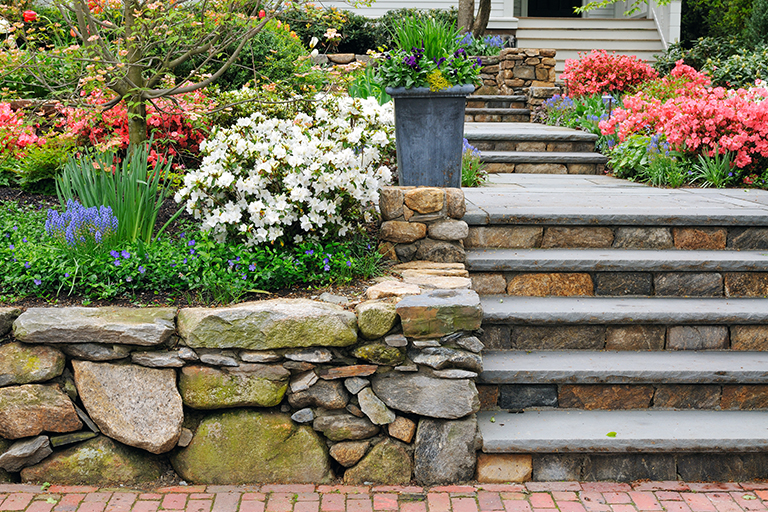By Vicki Spencer
Do you plan for repeating patterns in your garden and landscaping each spring? You may do it without realizing it just because it is pleasing to the eye.
Think about it. Do you line your plants against a repeating picket fence? Or perhaps you place garden art or bird houses among your plantings in a pattern. What about that path of brickwork along the garden? Does it follow a pattern?
Your patterns might even be in your garden plants. Have you noticed how one leaf shape can repeat in another plant? Can you see how breaking that pattern of leaf shapes by adding tall, slender grasses makes for a pleasing overall design?
Gardens need form and definition to look like all those plants and pieces of garden art belong together. Without form or patterns, it just looks like a bunch of haphazard plants.
Patterns in the landscaping can start with physical structures. Use arbors, trellises, footpaths, gates and, as I mentioned earlier, fences, to create your pattern. And then go further. Think about the patterns in the plants themselves.
In botany, the patterns in plants are used for plant identification. At the family level of classification, plants in the same group have similar characteristics. Familiarity with branching patterns, leaf shapes and the number of petals on a flower can help us identify plants and know whether they are edible, poisonous or have medicinal uses. It can also help us identify where plants fit in the pattern of our garden.
Look for the patterns in leaves themselves. Since most plants don’t blossom year round, the leaves themselves can provide added interest to the landscape.
The Plant Select website is a handy resource for identifying plants with different leaf shapes, sizes, textures and colors that do well in Colorado. Each year plantselect.org lists newly introduced plants that were tested by Denver Botanic Gardens and Colorado State University.
For example, Thin Man Indian grass is a slender grass with “stunning blue foliage.” It grows about 72 inches high and blooms in late summer. In contrast, Snowmass blue-eyed veronica is a beautiful ground cover that grows just 1 to 2 inches high. It has rounded leaves and small white flowers with a blue eye. You could combine these two leaf patterns in your garden by planting the veronica at the base of the grass.
Plant Select’s website also features downloadable designs based on various patterns you may want. For instance, Shalene Hiller’s Rock Garden juxtaposes low growing Colorado Blue Gamma grass with Red Rocks Penstemon and Parry’s Century plant. The cold-hardy century plant has broad silver-gray leaves that grow into a rosette when mature while the penstemon has glossy green foliage and rose pink flowers, and the bunch grass has narrow stalks that are generally flat. In viewing the different designs, you can see how professionals utilize a diversity of leaf patterns to create gardens that are beautiful throughout the year.
Study others’ designs for gardens. Visit botanical gardens and arboretums and really look at how they structured their gardens. Does a water feature define an area? Is there a clipped hedge that adds a border or is it a row of potted plants?
Once you start looking, you will see patterns in gardens all around you and they all pique your interest.
Gardener Vicki Spencer has an eclectic background in conservation, water, natural resources and more.

